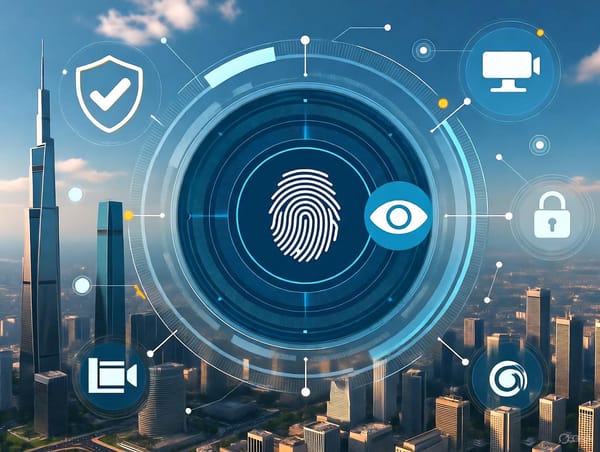The Pause Principle
The Pause Principle teaches us that a brief moment of reflection before reacting can shield us from the costly consequences of misinformation, as seen in the tragic misidentification during the 2013 Boston Marathon bombing.

Information travels faster than ever and our instinct is often to react immediately—whether it’s sharing a breaking news story, responding to a provocative post, or making a decision based on a headline. But what if that instinct is leading us astray? The Pause Principle is a simple yet transformative idea: taking a moment to stop, reflect, and verify before acting can shield us from the costly consequences of misinformation. In this article, we’ll explore why slowing down matters, how it works in practice, and real-world examples that show its power in action.
Why We Fall for Misinformation
We live in a world designed for speed. Social media platforms reward quick engagement—likes, shares, and retweets happen in seconds. News cycles churn out updates by the minute, and our attention spans shrink under the pressure to keep up. This environment primes us to act on impulse rather than reason. When we see a shocking headline or an emotional image, our brains light up with urgency, urging us to respond before we’ve had time to think.
This is where misinformation thrives. Falsehoods often spread faster than facts because they’re crafted to trigger our emotions—fear, anger, or outrage. A 2018 study from MIT found that fake news spreads six times faster than true stories on social media, largely because it’s more novel and emotionally charged. Without a pause, we become unwitting amplifiers of lies, sharing unverified claims that can mislead others and even harm ourselves.
A Simple Defense
The Pause Principle isn’t about overcomplicating your life or becoming a skeptic of everything. It’s about building a habit of brief hesitation—a mental speed bump—that gives you space to ask critical questions. Is this source trustworthy? Does this story make sense? Can I verify it elsewhere? This small act of slowing down can be the difference between clarity and chaos.
Pausing doesn’t mean paralysis. It’s not about endless deliberation or distrusting every piece of information. Instead, it’s a practical tool to regain control in a world that often feels out of control. By taking a breath before hitting “share” or making a judgment, you give yourself the chance to separate signal from noise.
The 2013 Boston Marathon Bombing
One of the most striking examples of the Pause Principle—or the lack of it—came during the 2013 Boston Marathon bombing. In the chaotic aftermath, social media erupted with speculation about the perpetrators. Reddit users and amateur sleuths began analyzing photos and videos, quickly zeroing in on a college student named Sunil Tripathi as a suspect. The theory gained traction, fueled by retweets and news outlets picking up the unverified story. Tripathi’s name trended worldwide.
The problem? He was innocent. Tripathi wasn’t involved in the attack; he had actually gone missing weeks earlier and was later found to have died by suicide, unrelated to the bombing. The rush to identify a culprit without pausing to verify led to a devastating mistake. His family endured harassment and grief, amplified by a public that didn’t stop to check the facts.
Imagine if more people had paused. A quick cross-check with official sources—like the FBI’s statements—or even a moment to question the credibility of a random Reddit thread could have slowed the spread of this falsehood. The Pause Principle could have spared a family unnecessary pain and prevented a collective error.
When Misinformation Hits Home
Misinformation doesn’t just affect public events—it can strike closer to home. Consider the rise of health-related myths, like the false claim that drinking bleach could cure COVID-19. In 2020, this dangerous idea circulated widely online, leading some individuals to ingest harmful substances in a desperate bid for protection. The U.S. Centers for Disease Control and Prevention reported a spike in poison control calls linked to such misinformation.
For an individual, pausing could have been a lifesaver. A moment to search for credible medical advice—say, from the CDC or World Health Organization—would have revealed the truth and prevented a reckless decision. The personal stakes of misinformation remind us that the Pause Principle isn’t just about avoiding embarrassment; it can protect our health, finances, and relationships.
How to Practice the Pause Principle
So how do you make pausing a habit in a fast-paced world? It starts with small, intentional steps:
- Delay Your Reaction: When you encounter a surprising or emotional piece of information, commit to waiting five minutes before acting. Use that time to breathe and let your initial reaction settle.
- Check the Source: Look at where the information comes from. Is it a reputable outlet with a track record of accuracy, or an obscure blog with no credentials? A quick glance can reveal red flags.
- Cross-Verify: Search for the same story elsewhere. If multiple credible sources report it, you’re on safer ground. If it’s only circulating on fringe sites or social media, proceed with caution.
- Trust Your Gut—Then Test It: If something feels off, it might be. Use that instinct as a cue to dig deeper, not as permission to dismiss or accept it outright.
These steps don’t require hours of research—just a few minutes of deliberate thought. Over time, they become second nature, turning the Pause Principle into a shield against misinformation.
Pausing Benefits Everyone
When you pause, the impact extends beyond yourself. By refusing to share unverified claims, you reduce the noise that drowns out truth. You model critical thinking for friends, family, and followers, encouraging a culture of reflection over reaction. In a 2021 experiment by the University of Cambridge, researchers found that prompting social media users to consider accuracy before sharing reduced the spread of false stories by 26%. One person’s pause can spark a chain reaction.
Think of it like a dam holding back a flood. Each time you stop misinformation from flowing through your network, you protect others from its downstream effects—whether that’s panic, division, or harm.
Slowing Down in a Fast World
The Pause Principle isn’t just about dodging misinformation; it’s a philosophy for navigating life. In a society that glorifies speed—fast news, fast decisions, fast opinions—slowing down is a radical act of empowerment. It’s a way to reclaim agency over what you believe and share, rather than letting algorithms and outrage dictate your choices.
History offers a lesson here. In the 19th century, newspapers often printed unverified rumors, only to issue corrections later. Readers learned to wait for confirmation before trusting a story. Today, we have more tools than ever to verify—search engines, fact-checking sites, direct access to primary sources—yet we’re less patient. The Pause Principle bridges that gap, blending old-school wisdom with modern capability.
Pause, Verify, Thrive
Misinformation is a trap, but it’s one we can avoid. The Pause Principle isn’t a cure-all, but it’s a powerful first step—a moment of clarity in a storm of noise. From the Boston Marathon tragedy to personal health scares, the cost of rushing is clear. By slowing down, we save ourselves and others from mistakes that can’t be undone.
Next time you’re tempted to react instantly, try it: pause. Take a breath. Check the facts. You’ll be amazed at how much a single moment can change.





